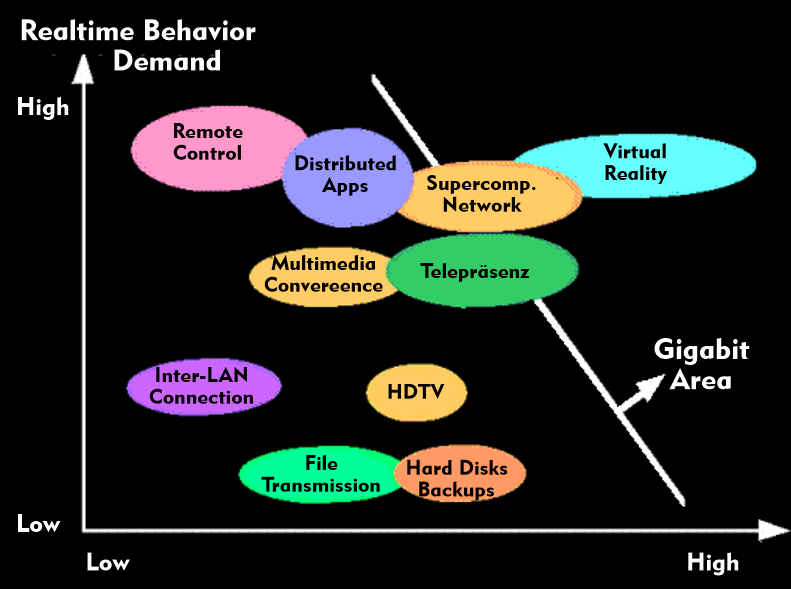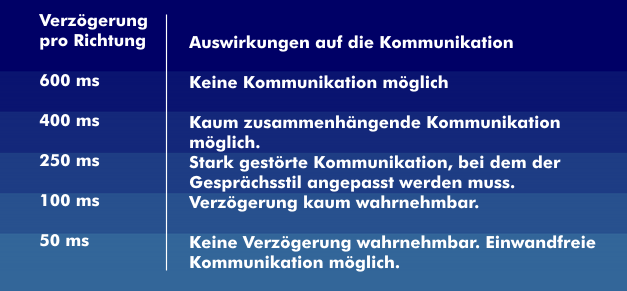tranmission bandwidth
The transmission bandwidth can be determined quite generally from the quantities of data to be transmitted in a unit of time. In contrast to asynchronous multimedia, the realization of real-time applications, as increasingly demanded in connection with multimedia, requires an extraordinarily powerful data communications infrastructure that is characterized above all by a high transmission bandwidth and the shortest possible delay times. A distinction must be made between audio and moving image data.
For real-time transmission ofaudio information, playback quality is a key aspect.
For example, with a sampling rate of the analog signal of 16 kHz and quantization of each sample with 8 bits, audio signals with 64 kbit/s are available for transmission after compression from 8 to 4 bits. This corresponds approximately to the quality of an ISDN telephone. To achieve CD quality, on the other hand, ten times the amount of data is required, i.e. about 640 kbit/s per audio channel. This can be reduced to about 200 kbit/s using MPEG compression.
If several users take part in a real-time conversation, the required transmission bandwidths add up. A conference of two requires twice the transmission bandwidth, and a conference of three requires six times the transmission bandwidth. In general, for a meeting with N users, N(N-1) audio streams are required.
Requirements for multimedia transmissions
The highest transmission bandwidth requirements occur for real-time transmission of moving images. Bandwidth requirements for today's multimedia applications vary from 10 Mbps for video to several hundred Mbps for HDTV.
An image consists of about 1 million pixels displayed at 24 bits or higher. So 24 Mbit must be transmitted per screen content. With a 100 Mbit/s line, the transmission takes about 1m0 ms. However, this is only for one image, not for a sequence.
The transmission bandwidths required for moving image transmission could only be made available through the development of highly efficient compression methods, which rapidly reduced bandwidth requirements. When transmitting video, for example, one can limit oneself to transmitting only those parts of the image that have undergone a change compared to the previous image. The compression methods MPEG-1, MPEG-2 and MPEG-3 are used for this purpose. MPEG-2, for example, can be used to compress the current quality standard of television transmissions to 4 Mbit/s.


